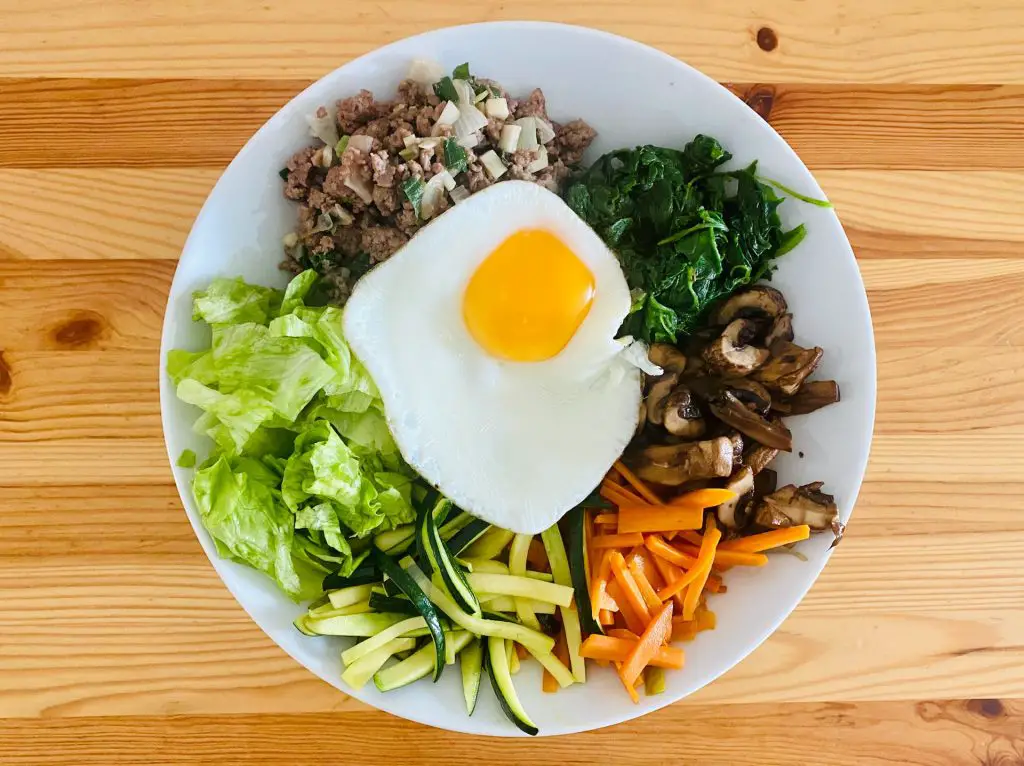Korean cuisine is renowned for its harmonious blend of flavors, vibrant colors, and healthy ingredients. Among the many delicious dishes that the Korean culinary tradition offers, Bibimbap stands out as one of the most iconic and beloved. This delightful dish, which translates to “mixed rice” in Korean, is a perfect representation of Korean culinary artistry. In this article, we will explore the history, ingredients, and step-by-step instructions for preparing an authentic and delicious Bibimbap.
A Brief History of Bibimbap
Before we delve into the intricacies of creating a scrumptious Bibimbap, it’s essential to understand the dish’s historical significance and evolution. Bibimbap has a rich history that dates back centuries, and its development reflects the cultural and culinary journey of Korea.
Origins
Bibimbap’s origins can be traced back to the Korean royal court cuisine of the Joseon Dynasty, which lasted from 1392 to 1910. It was initially known as “goldongban” and was reserved for the royal family and high-ranking officials. The dish’s evolution can be attributed to its practicality, as it allowed the use of leftover ingredients.
Symbolism
Bibimbap is not only known for its delicious taste but also for its symbolism. The assortment of colorful ingredients is thought to represent the harmony and balance in Korean culture. The different flavors and textures coming together symbolize the unity of the diverse Korean people.
Key Ingredients of Bibimbap
Before embarking on your Bibimbap culinary adventure, it’s crucial to familiarize yourself with the essential ingredients that make this dish so special. Traditionally, Bibimbap comprises five key components:
Rice (Bap)
Short-grain white rice: The foundation of Bibimbap, it provides a neutral canvas for the other ingredients.
Vegetables (Namul)
Spinach (sigeumchi namul): Blanched and seasoned with sesame oil and garlic.
Bean sprouts (kongnamul): Boiled and seasoned with soy sauce and sesame oil.
Fernbrake (gosari namul): Boiled and seasoned; optional, as it can be challenging to find.
Protein
Beef (bulgogi): Thinly sliced and marinated in a flavorful mixture of soy sauce, sugar, garlic, and sesame oil.
Tofu (dubu): Pan-fried or grilled and seasoned with soy sauce.
Sauce (Gochujang or Soy Sauce)
Gochujang: A spicy red pepper paste that adds a kick to the dish.
Soy Sauce: A milder alternative for those who prefer less heat.
Garnishes
Sesame seeds (ggae): Adds a nutty aroma and crunch.
Fried or poached egg (gyeran): Placed on top for a rich, creamy texture.
Nori seaweed (gim): Thin strips for a hint of umami.
Preparing Bibimbap: Step-by-Step Guide
Now that you’re acquainted with the core ingredients, let’s dive into the step-by-step process of creating a mouthwatering Bibimbap. This recipe serves four and includes both traditional and contemporary variations.
Traditional Bibimbap Recipe
Ingredients:
2 cups of short-grain white rice
1 pound of thinly sliced beef (ribeye or sirloin)
4 cups of mixed namul (spinach, bean sprouts, fernbrake)
4 eggs
4 sheets of nori seaweed
Sesame seeds for garnish
Vegetable oil for cooking
For the Bulgogi Marinade:
1/4 cup of soy sauce
2 tablespoons of sugar
2 tablespoons of minced garlic
2 tablespoons of sesame oil
1 tablespoon of grated ginger
1 teaspoon of crushed red pepper flakes (gochugaru)
For the Bibimbap Sauce (Gochujang-based):
4 tablespoons of gochujang
2 tablespoons of sesame oil
2 tablespoons of sugar
1 tablespoon of vinegar
1 tablespoon of water
Instructions:
Prepare the Rice:
Wash the rice thoroughly until the water runs clear.
Cook the rice according to the package instructions, and let it cool slightly.
Marinate the Beef:
In a bowl, combine all the bulgogi marinade ingredients.
Add the sliced beef to the marinade and let it sit for at least 30 minutes.
Prepare the Namul (Vegetables):
Blanch each type of namul separately in boiling water, then shock them in ice water to retain their vibrant colors.
Squeeze excess water from the vegetables and season them with sesame oil, garlic, and salt to taste.
Cook the Beef:
Heat a skillet or pan over high heat and add a bit of vegetable oil.
Stir-fry the marinated beef until it’s cooked through and slightly caramelized. Set aside.
Make the Bibimbap Sauce:
In a small bowl, whisk together the gochujang, sesame oil, sugar, vinegar, and water to create the sauce. Adjust the spice level to your preference.
Prepare the Eggs:
Fry or poach the eggs until the yolks are still runny.
Assemble the Bibimbap:
In individual serving bowls or a large platter, start with a base of cooked rice.
Arrange the namul, bulgogi, and fried or poached eggs on top of the rice.
Drizzle the Bibimbap sauce over the ingredients, and sprinkle sesame seeds for garnish.
Optionally, add strips of nori seaweed for extra flavor and presentation.
Mix and Enjoy:
To eat Bibimbap, use a spoon or chopsticks to thoroughly mix all the ingredients, ensuring the sauce coats every component.
Savor the delightful blend of flavors and textures as you enjoy your homemade Bibimbap!
Contemporary Variations
While the traditional Bibimbap recipe remains beloved and timeless, modern interpretations of this dish have emerged, catering to different dietary preferences and culinary trends. Here are a few contemporary variations to consider:
Vegetarian Bibimbap: Replace the meat with tofu or tempeh for a vegetarian-friendly option. You can also include additional vegetables like shiitake mushrooms and zucchini.
Vegan Bibimbap: For a fully plant-based version, omit the eggs and use a vegan-friendly gochujang sauce.
Bibimbap Bowl: Serve Bibimbap in a bowl instead of a hot stone pot for a convenient and quick meal. You can customize the toppings to your liking.
Grain Bowl Bibimbap: Experiment with different grains like quinoa, barley, or brown rice as the base for a healthier twist on Bibimbap.
Seafood Bibimbap: Replace the beef with seafood such as shrimp, squid, or fish for a delightful seafood Bibimbap.
Tips for the Perfect Bibimbap
To ensure your Bibimbap turns out impeccably delicious, here are some additional tips to consider:
Hot Stone Pot: If you want the iconic crispy rice layer at the bottom of the Bibimbap, use a heated stone pot or dolsot for serving. The heat will crisp up the rice, adding a delightful texture.
Presentation: Bibimbap is not just about taste but also about presentation. Arrange the colorful ingredients in a visually appealing way to make your dish even more enticing.
Customization: Feel free to adjust the ingredients to your liking. Bibimbap is a flexible dish, and you can include your favorite vegetables and protein sources.
Spice Level: Control the spiciness of your Bibimbap by adjusting the amount of gochujang in the sauce. You can also serve extra gochujang on the side for those who prefer it spicier.
Leftovers: Bibimbap is an excellent dish to use up leftovers. Feel free to incorporate any cooked vegetables or protein you have in the refrigerator.
Bibimbap is a culinary masterpiece that embodies the essence of Korean cuisine. Its rich history, harmonious blend of flavors, and beautiful presentation make it a beloved dish not only in Korea but also around the world. Whether you choose to prepare the traditional version or experiment with contemporary variations, Bibimbap offers a delightful and customizable dining experience that’s sure to satisfy your taste buds.
So, why wait? Gather the ingredients, follow the steps, and embark on your journey to mastering the art of Bibimbap. Whether you’re cooking for yourself, family, or friends, the reward of enjoying this delectable Korean dish is well worth the effort. Happy cooking, and bon appétit!
The Health Benefits of Bibimbap
Beyond its mouthwatering taste and cultural significance, Bibimbap is also a nutritious and well-balanced meal. Its combination of colorful vegetables, lean protein, and whole grains offers a range of health benefits:
Rich in Antioxidants: The variety of vegetables used in Bibimbap provides a wide array of vitamins, minerals, and antioxidants, which can help combat oxidative stress and inflammation in the body.
Balanced Macronutrients: Bibimbap offers a balanced ratio of carbohydrates from rice, protein from meat or tofu, and healthy fats from sesame oil, promoting satiety and stable energy levels.
Fiber Content: Brown rice, when used as a base, adds fiber to the dish, aiding in digestion and promoting a feeling of fullness.
Lean Protein: The choice of lean meats or plant-based protein sources in Bibimbap contributes to muscle maintenance and repair.
Heart-Healthy Fats: Sesame oil, commonly used in Bibimbap, contains heart-healthy monounsaturated and polyunsaturated fats, which can help reduce the risk of heart disease.
Low in Added Sugars: The natural sweetness of vegetables and the subtle sweetness in the sauce help keep the added sugar content in check.
Customizable: You have the flexibility to adjust the ingredients to suit your dietary preferences and requirements, making it an adaptable and health-conscious meal.
Enjoying Bibimbap Beyond the Kitchen
While Bibimbap is a delightful dish to prepare and savor at home, you can also explore its culinary delights outside your kitchen. Here are a few ways to enjoy Bibimbap beyond your home:
Korean Restaurants: Visit a local Korean restaurant or Korean barbecue joint to savor the authentic flavors of Bibimbap prepared by expert chefs.
Food Trucks and Street Vendors: Many cities have Korean food trucks or street vendors that offer Bibimbap as a quick and tasty on-the-go meal.
Korean Cultural Festivals: Attend Korean cultural festivals or events in your area, where you can often find Bibimbap stalls showcasing the dish’s cultural heritage.
Cooking Classes: Consider taking a Korean cooking class to learn the art of making Bibimbap from a knowledgeable instructor.
Travel to Korea: If you’re a passionate food traveler, a trip to South Korea is a must to explore the diverse regional variations of Bibimbap and other Korean delicacies.
In conclusion, Bibimbap is a culinary gem that beautifully encapsulates the essence of Korean cuisine. Its history, symbolism, and versatile nature make it a beloved dish for both Koreans and food enthusiasts worldwide. Whether you choose to prepare a traditional recipe or experiment with contemporary variations, Bibimbap offers a delightful and customizable dining experience that’s sure to satisfy your palate.
The beauty of Bibimbap lies not only in its taste but also in its capacity to bring people together, symbolizing unity and harmony. So, whether you’re enjoying it as a home-cooked meal, dining at a Korean restaurant, or savoring it at a cultural festival, Bibimbap is a flavorful journey into the heart of Korean gastronomy.
As you embark on your Bibimbap adventure, remember that the key to a memorable experience lies in using fresh ingredients, crafting a beautiful presentation, and adjusting the flavors to suit your personal taste. Whether you’re a novice cook or an experienced chef, the joy of creating and savoring Bibimbap is a testament to the culinary wonders that global cuisine has to offer. So, don your apron, pick up your chopsticks, and explore the world of Bibimbap—a truly delectable Korean delight!




